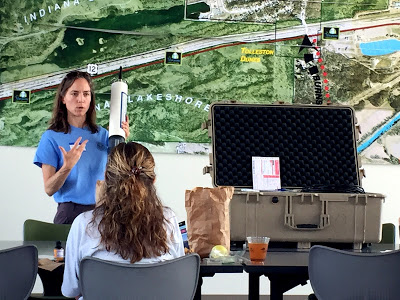
 Environmental educators gathered at Portage Lakefront in Indiana last Friday to attend a Hydrolab training workshop led by IISG community outreach specialist Kristin TePas.
Environmental educators gathered at Portage Lakefront in Indiana last Friday to attend a Hydrolab training workshop led by IISG community outreach specialist Kristin TePas.
 Environmental educators gathered at Portage Lakefront in Indiana last Friday to attend a Hydrolab training workshop led by IISG community outreach specialist Kristin TePas.
Environmental educators gathered at Portage Lakefront in Indiana last Friday to attend a Hydrolab training workshop led by IISG community outreach specialist Kristin TePas.
This fall, our staff made a splash at the @ilsciteaching Conference, @sheddaquarium Educators’ Conference, and the Place-Based Education Conference.
Would you like to know where you can catch up with our education team in 2026? Sign up for our Education Newsletter at the link in bio or
https://iiseagrant.org/education/subscribe-to-education-newsletter/
Photos by Michigan Sea Grant and Illinois-Indiana Sea Grant

🌊 Save the Date! 🌊
Shipboard Science Immersion 2026
Join the Center for Great Lakes Literacy aboard the R/V Lake Guardian on Lake Superior, July 7–14, 2026!
✅ Open to formal & nonformal educators (grades 5–12) across the Great Lakes region.
📅 Applications open January 2026
Learn more: https://cgll.org/signature-program/r-v-lake-guardian-shipboard-science-immersion/ or the link in bio.
#TeachingTuesday

Join the Invasive Crayfish Collaborative for an exciting webinar featuring Dr. Chris Taylor from the Illinois Natural History Survey who will provide an overview of midwestern crayfish habitat requirements, feeding, reproductive biology, and life-history.
Crayfishes in the Midwest occupy almost every type of aquatic and semi-aquatic habitat in the region. They function as critically important components of those ecosystems and in many cases represent a majority of invertebrate biomass. As “keystone” species, understanding their biology and roles in ecosystems is critically important.
Register for the webinar at InvasiveCrayfish.org/events1 Or the link in bio.
